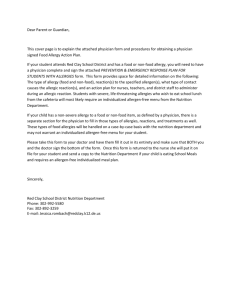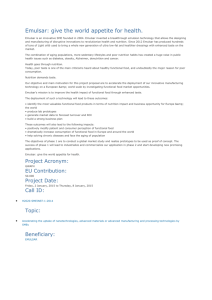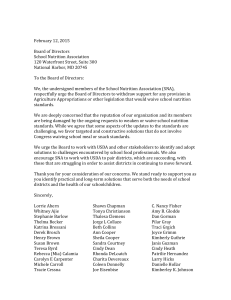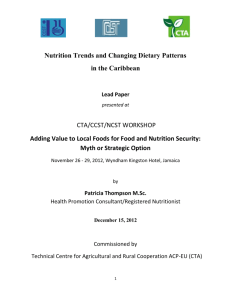Procedures for Prevention of Allergic Reaction to Children Sensitive
advertisement
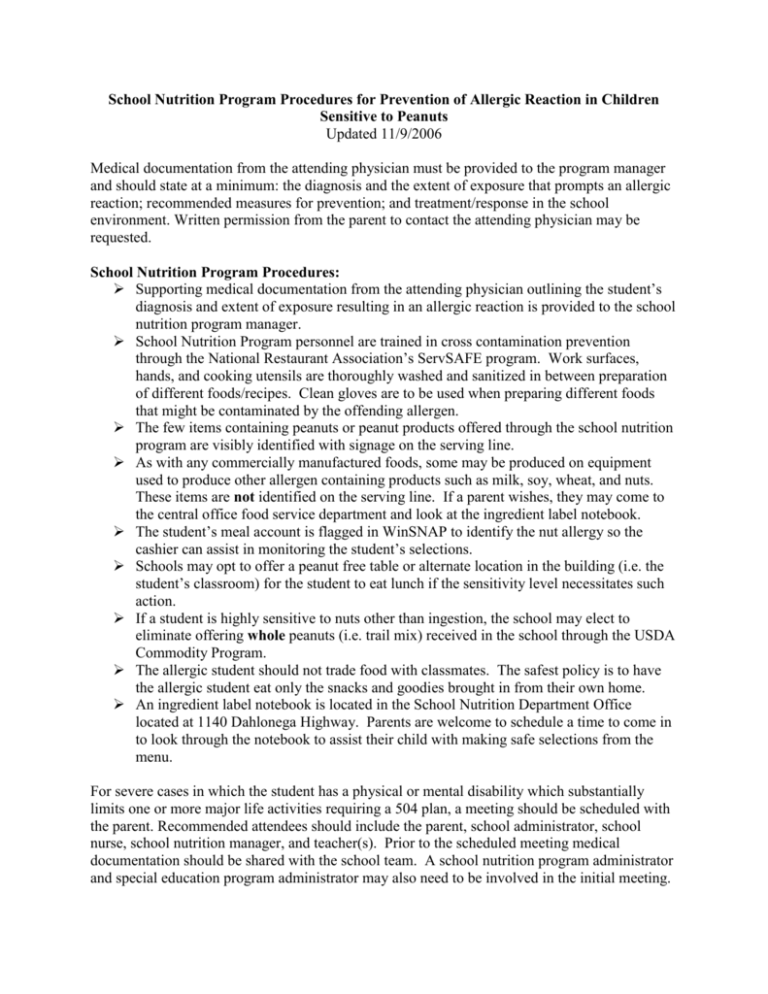
School Nutrition Program Procedures for Prevention of Allergic Reaction in Children Sensitive to Peanuts Updated 11/9/2006 Medical documentation from the attending physician must be provided to the program manager and should state at a minimum: the diagnosis and the extent of exposure that prompts an allergic reaction; recommended measures for prevention; and treatment/response in the school environment. Written permission from the parent to contact the attending physician may be requested. School Nutrition Program Procedures: Supporting medical documentation from the attending physician outlining the student’s diagnosis and extent of exposure resulting in an allergic reaction is provided to the school nutrition program manager. School Nutrition Program personnel are trained in cross contamination prevention through the National Restaurant Association’s ServSAFE program. Work surfaces, hands, and cooking utensils are thoroughly washed and sanitized in between preparation of different foods/recipes. Clean gloves are to be used when preparing different foods that might be contaminated by the offending allergen. The few items containing peanuts or peanut products offered through the school nutrition program are visibly identified with signage on the serving line. As with any commercially manufactured foods, some may be produced on equipment used to produce other allergen containing products such as milk, soy, wheat, and nuts. These items are not identified on the serving line. If a parent wishes, they may come to the central office food service department and look at the ingredient label notebook. The student’s meal account is flagged in WinSNAP to identify the nut allergy so the cashier can assist in monitoring the student’s selections. Schools may opt to offer a peanut free table or alternate location in the building (i.e. the student’s classroom) for the student to eat lunch if the sensitivity level necessitates such action. If a student is highly sensitive to nuts other than ingestion, the school may elect to eliminate offering whole peanuts (i.e. trail mix) received in the school through the USDA Commodity Program. The allergic student should not trade food with classmates. The safest policy is to have the allergic student eat only the snacks and goodies brought in from their own home. An ingredient label notebook is located in the School Nutrition Department Office located at 1140 Dahlonega Highway. Parents are welcome to schedule a time to come in to look through the notebook to assist their child with making safe selections from the menu. For severe cases in which the student has a physical or mental disability which substantially limits one or more major life activities requiring a 504 plan, a meeting should be scheduled with the parent. Recommended attendees should include the parent, school administrator, school nurse, school nutrition manager, and teacher(s). Prior to the scheduled meeting medical documentation should be shared with the school team. A school nutrition program administrator and special education program administrator may also need to be involved in the initial meeting.




